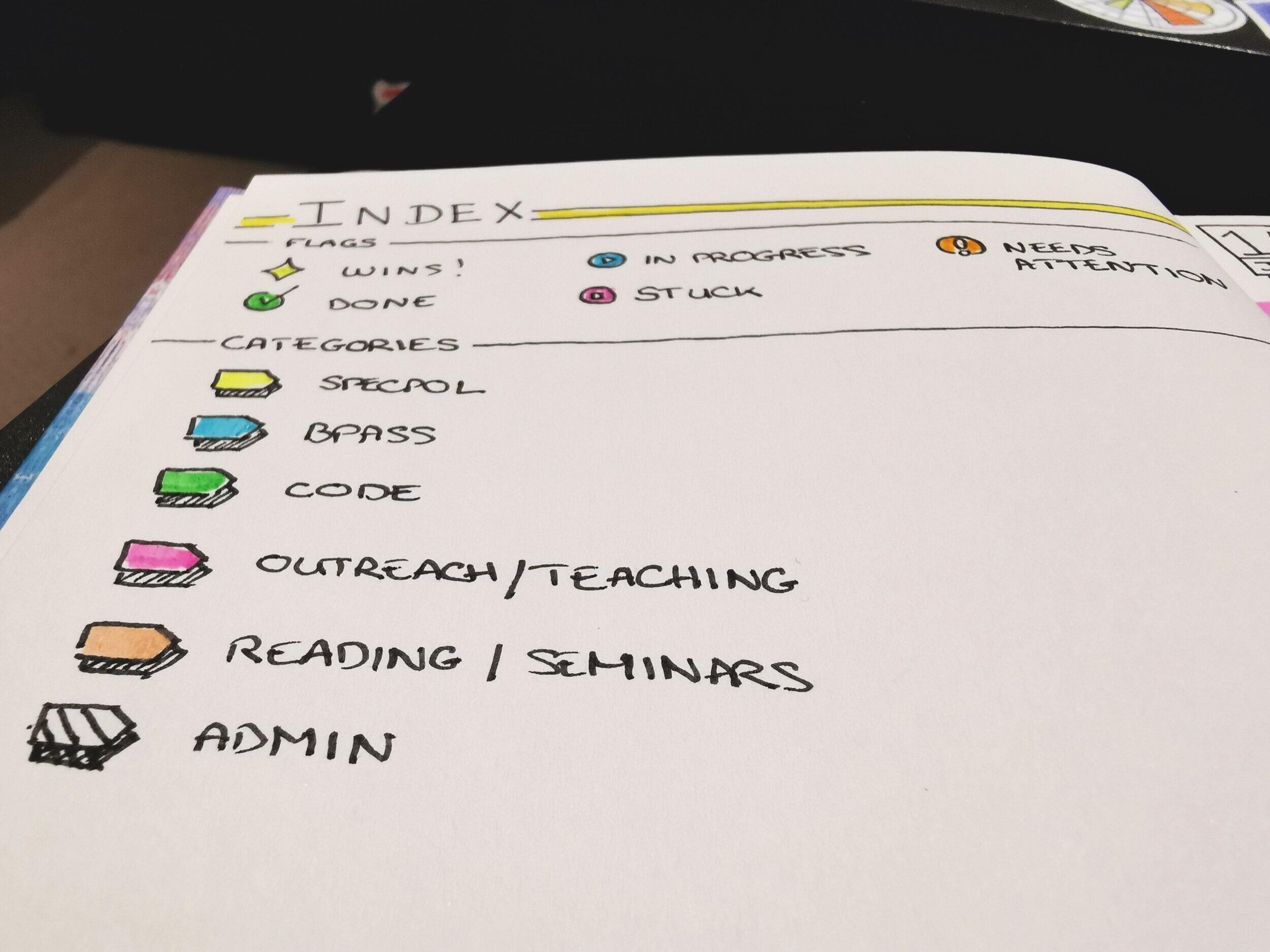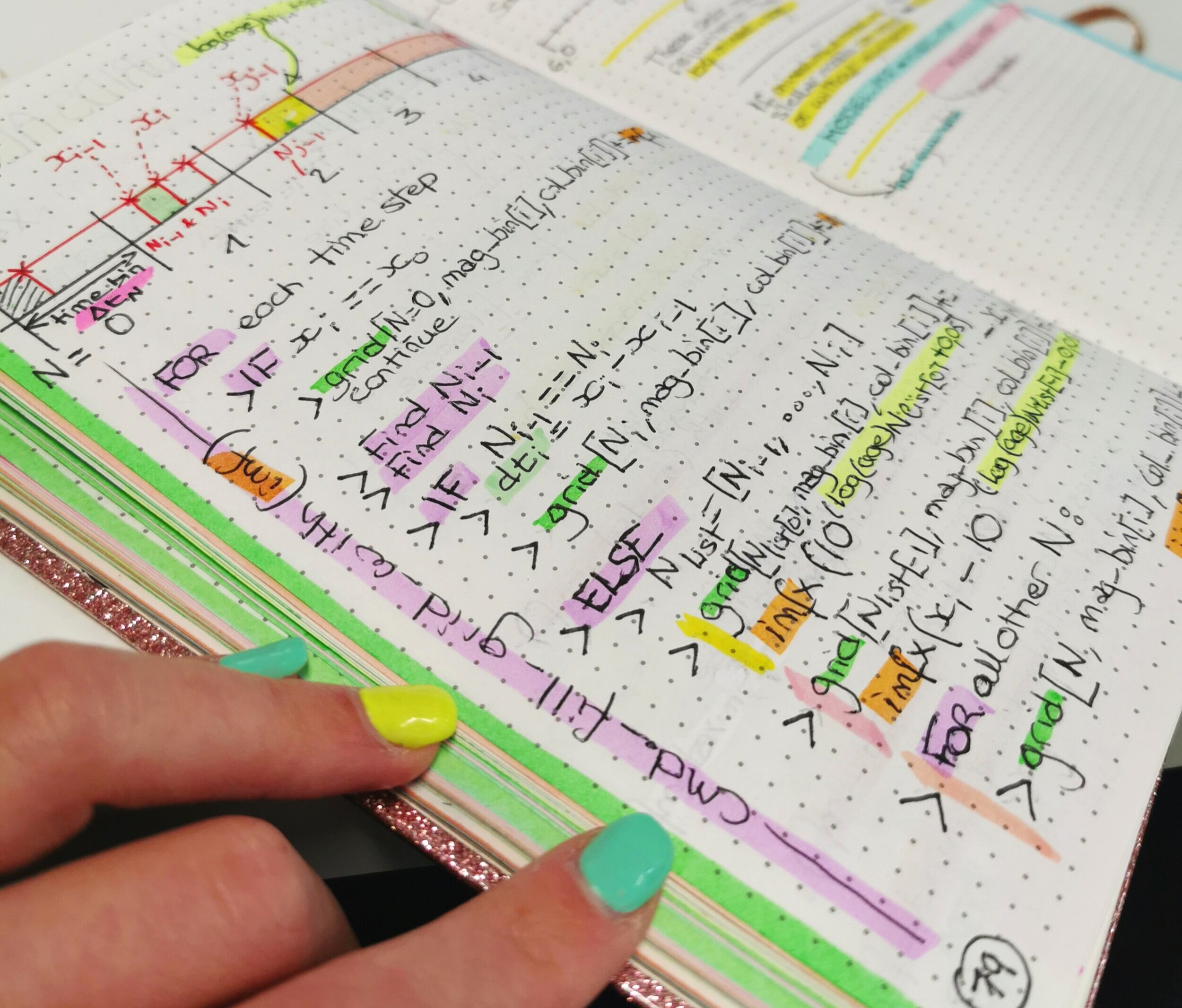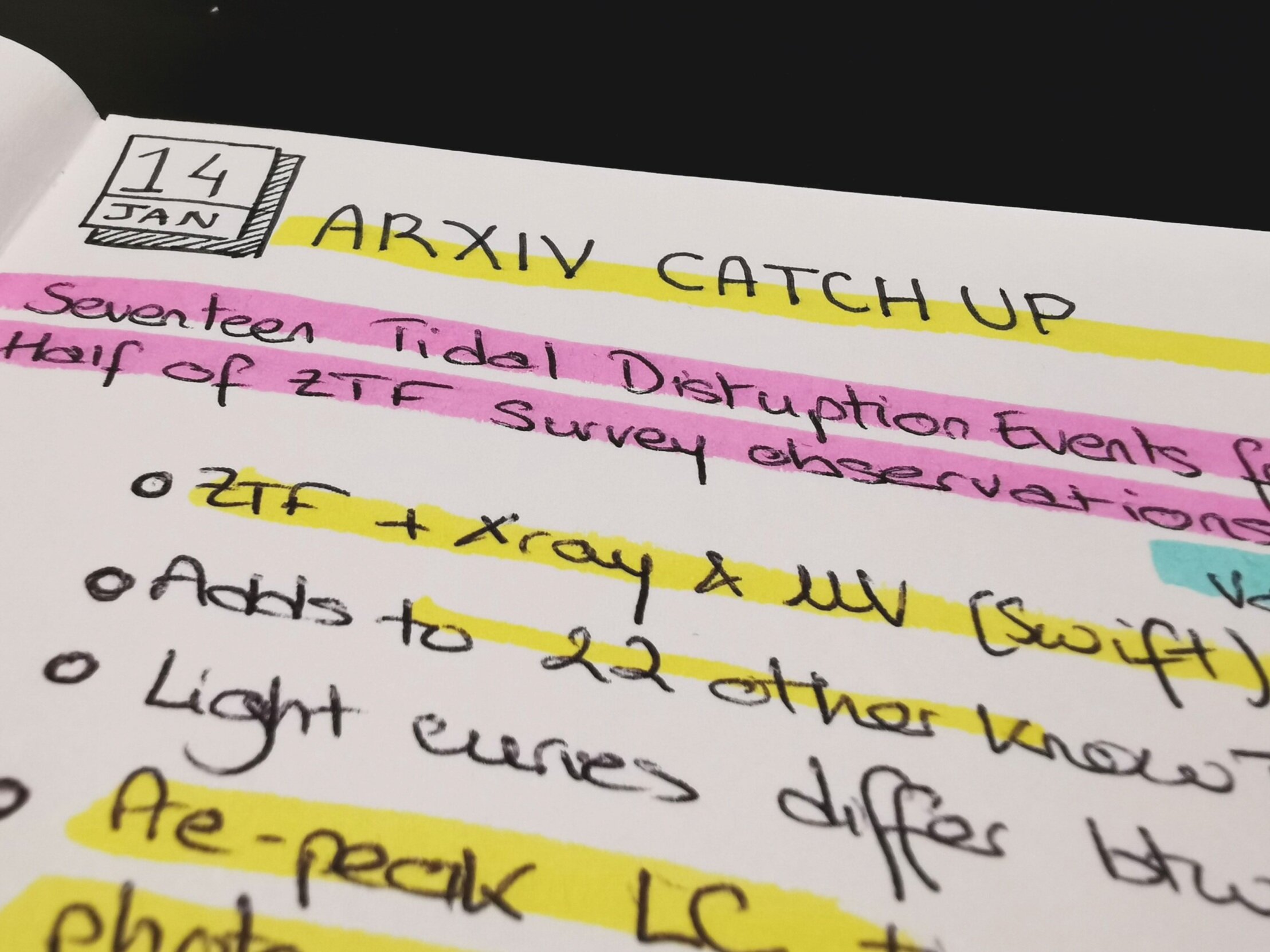A Guide To Research Logbooks
Every time I post pictures of my logbook, I get asked a lot of questions, so today I am finally going to walk you through how you can make the most of your notebook.
What’s the point?
Before you start or re-start your journey with logbooks, we need to take a minute to think about why we are doing this. This is not a diary or a bullet journal, it’s not an arts and crafts project, it is a working tool.
The way I see it, my logbook serves multiple purpose:
Keep track of progress, main results or pending questions.
Keep notes on interesting pieces of the literature
Mental Health boost
Point 1 is the most important and probably the one that we were all taught in school and at Uni (at least for scientists). It is important for reproducibility, and to pick up where you left off without sifting through pages of loose paper. It keeps me sane.
Point number 2 is something that I personally started doing because I struggle reading - I have a short attention span and having to synthesise the information in my logbook helps my focus tremendously.
And finally point 3 — the mental health benefits — the logbook accomplishes two things: a) keeps track of your progress in a visible way; b) gives you a cathartic and productive activity to do for those times when data analysis is really not on the menu (everyone gets tired).
The important thing to remember though, is that your logbook is yours and it should serve you. So take a little time to think “What will this accomplish for me?” and keep that in mind as you start setting it up and continue using it.
I’ll tell you what I do, but make it your own.
How-to
Which notebook?
This is 100% up to you, obviously, but if you don’t know where to start, here are my tips.
Size-wise, I prefer an A5 notebook (see F1) because it gives me enough space to do what I need, and is easier to transport than an A4 format — I travel a lot.
Make sure the paper is thick and of good quality, especially if you are going to colour code! Highlighters and gel inks will bleed through low grade paper, which will make your notes harder to read.
Feel free to use bullet-ed or lined paper (bullet-ed makes graphing easier), I personally go for plain: my notebook is actually a sketch book — I’m all about that thick paper life.
F1 — My notebook. Pen for size reference
Categories and Colour Coding
F2 — These are my categories - create your own to fit your research!
Being able to find the information we need from our logbook is essential, so we need to keep things organised. But if we’re working on multiple projects at the same time, isn’t it going to quickly become a mish-mash of notes?
F3 — See the green highlight on the side of the pages?
Enter categories and colour-coding.
The way I deal with this is by defining a set of categories — see F2. These have to be general enough that you don’t have to change them (or at least not regularly), but sufficiently descriptive so that they remain useful.
Assign each of these categories a colour and then colour code the side of your pages, so that, as you flip through your logbook looking for something, you can at a glance know whether a page might contain the information you are looking for! — see F3.
Colour coding does not have to limit itself to categories! It is a great way to guide your eye to specific pieces of information and reduce mental fatigue.
In picture F4, you can see an example of the notes I take on the literature: Paper titles are in pink, author names in blue and important information in yellow.
Going back to F3 you can see some pseudo-code I wrote for one of my algorithms: note how loops and variables are colour coded too? It’s a way to show structure in an instinctive way before you even read the contents.
Now, I’m pretty excessive when it comes to colour coding — I use a lot of highlighters (F5) — but you don’t need to be.
Again, think “What will this accomplish for me?” Just be purposeful and consistent.
Colour coding does not have to limit itself to categories! It is a great way to guide your eye to specific pieces of information and reduce mental fatigue.
In picture F4, you can see an example of the notes I take on the literature: Paper titles are in pink, author names in blue and important information in yellow.
Going back to F3 you can see some pseudo-code I wrote for one of my algorithms: note how loops and variables are colour coded too? It’s a way to show structure in an instinctive way before you even read the contents.
Now, I’m pretty excessive when it comes to colour coding — I use a lot of highlighters (F5) — but you don’t need to be.
Again, think “What will this accomplish for me?” Just be purposeful and consistent.
F4 — Colour coding notes helps guide your eye and limit mental fatigue.
F5 — That’s a lot of colours
Dates and titles
Another important part of being able to locate the information you want is to write down the date and a title to whatever you are writing.
F5 - Snappy and descriptive titles and nifty dates make it easy for your to find what you are looking for.
Titles should be short, descriptive and consistent. For example, my regular summaries of interesting papers are always called “ArXiv Catch-up” (see F4); when I was working on my CMD codes, I had sections called “CMD - I”, “CMD - II”, “CMD - III”, etc… The example if F5 has a main title and a small subtitle for clarification. Get creative whilst keeping in mind the motto “What will this accomplish for me?“
Now, if you want to add a little flourish and a bullet-journal vibe, you can decorate your dates and titles! That’s something I do, and my best tips for you are: keep it simple, keep it consistent. Favouring simple flourishes means you’re less likely to give them up — if they’re a hassle, you’ll drop them pretty quickly. Consistency, which I keep mentioning, helps guide your eye to the information very quickly.
Page numbers and referencing
F6 - Page numbers don’t have to be big but they are essential to cross-referencing.
Last but not least, we need to be able to cross-reference our work. An essential part of this is numbering pages. Most notebooks I come across don’t have numbered pages so I do it myself. Pro-tip: Number your pages a dozen at a time if you can’t be bothered doing the whole thing at once (F6).
Now, our notebook may also contain figures and equations, but how would you know where to find, say, Figure 25? Hard to tell. Traditional numbering doesn’t work for this format. I recommend using page numbers as reference instead. For example, a Figure on page 26 would be called F.26, even if it’s not the 26th figure; similarly an equation on page 89 would have the reference E.89. If you have multiple figures on one page you can of course have additional numbering: In F7, for example, we’d have F.11-1 and F.11-2.
F7 - Using page numbers as references means you’ll always find your graphs. These figures on page 11 have reference F.11-1 and F.11-2
Referencing goes beyond figures — anything that can help you recreate your work deserves a reference. For example, electronic resources, such as scripts or Jupyter notebooks that may have produced a result reported in your logbook, should be referenced: my solution is to simply write a short-hand of their path on my computer.
You might also need to reference previous logbooks: just give them names! Mine have boring references such as LBNZ1 (LogBook New Zealand 1), but why not get creative!?
Whatever you do, remember to ask yourself “What is this going to accomplish for me?”
Have fun! :D
If you have your own logbook, share your pictures with my on Twitter or Instagram @sydonahi








